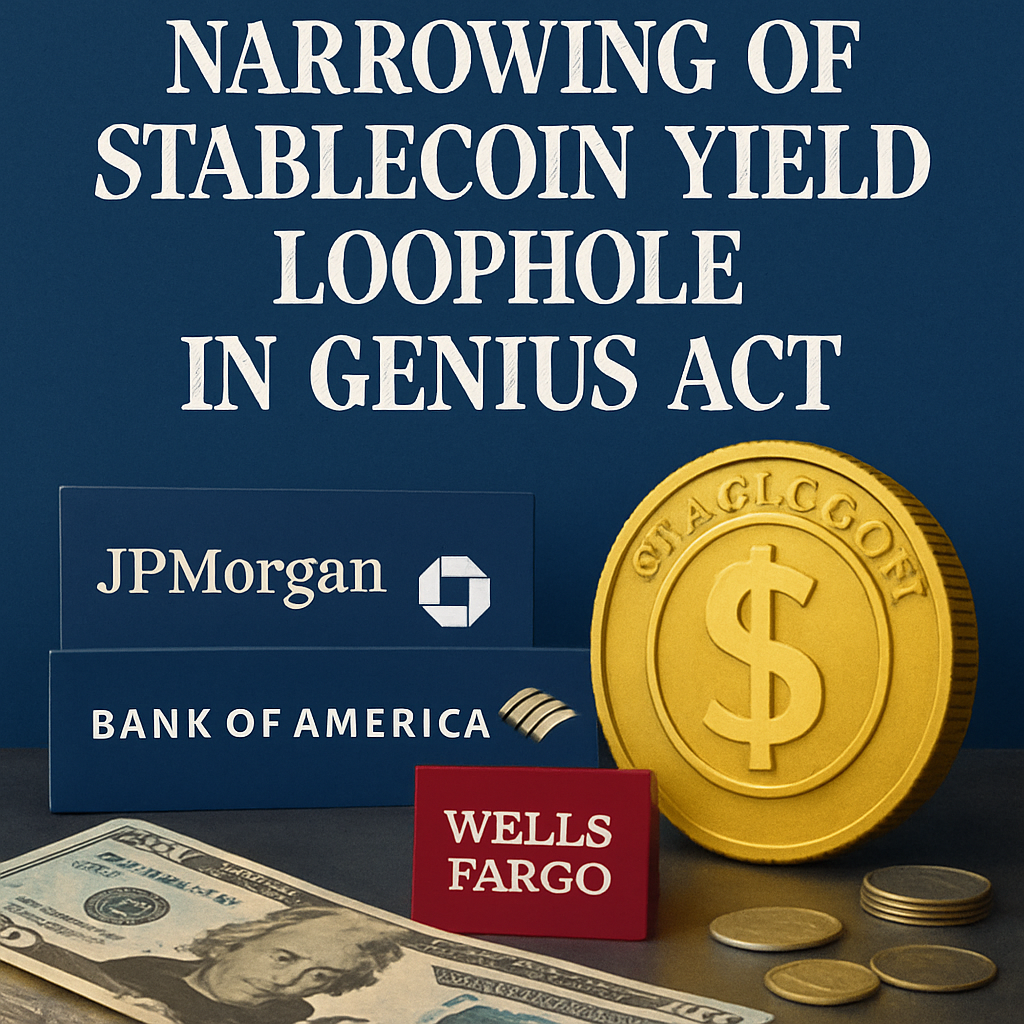On August 13, 2025, major U.S. banking associations, including the Bank Policy Institute (BPI), American Bankers Association (ABA), Consumer Bankers Association (CBA), and Independent Community Bankers of America (ICBA), jointly sent a letter to Congressional leaders calling for immediate legislative action to narrow the scope of the GENIUS Act. The coalition highlighted a regulatory gap in the law that currently prohibits stablecoin issuers from paying direct yield but does not explicitly extend that prohibition to affiliate entities or centralized exchanges. They argue that this loophole could be exploited by providers through partnerships, enabling indirect yield offerings that compete unfairly with traditional bank deposits.
The banks cited a U.S. Treasury report projecting that up to $6.6 trillion could shift from the banking system into yield-bearing stablecoin products if the loophole remains unaddressed. In their letter, the groups warned that such an outflow of deposits could degrade banks’ capacity to fund loans, reduce credit availability for households and small businesses, and ultimately lead to higher interest rates and increased volatility in financial markets. They emphasized the need for parity between regulated banking products and stablecoin instruments, underscoring that stablecoins lack the underlying mechanisms—such as credit intermediation and securities investments—that support bank yields.
The letter included detailed reasoning on market structure, noting that stablecoins do not generate income through investments but rely on reserve mechanisms to maintain value. Banks contend that allowing yield functions only through affiliated platforms circumvents the intent of the GENIUS Act, undermining its consumer-protection and financial-stability objectives. They recommended explicit amendments to Section 105(b) of the Act to encompass affiliates, exchanges, and third-party service providers, closing any pathway for proxy interest. The groups also proposed enhanced reporting and audit requirements for affiliated entities to ensure transparency around yield practices.
Industry stakeholders reacted swiftly. Stablecoin advocates warned that overbroad amendments could stifle innovation and restrict the development of efficient payment rails, while consumer groups expressed concern over potential confusion for users navigating evolving regulations. Congressional aides confirmed that staff discussions are ongoing, with bipartisan support for refining legislative language to balance innovation and stability. A markup session in the Senate Banking Committee is tentatively scheduled for late August, with stakeholders preparing to submit testimonies.
The debate underscores the increasing scrutiny on stablecoins as they transition from niche digital assets to mainstream financial instruments. With the U.S. stablecoin market valued at $280.2 billion as of June 30, 2025, and projections of growth to $2 trillion by 2028, policymakers face pressure to establish robust frameworks that protect consumers without hampering technological advancement. The outcome of this regulatory review will shape the future competitive dynamics between traditional banks and emerging digital asset platforms in the United States and beyond.

Comments (0)